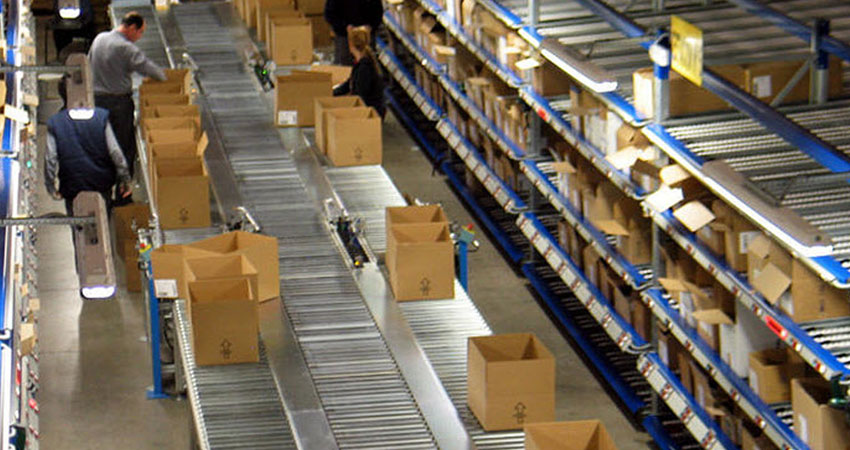To determine if your ecommerce fulfillment center is running as efficiently as possible, start with an operations audit or assessment, taking into account quantitative and qualitative aspects of all processes and systems.
Assess your processes and costs and answer these questions:
- How can I spend less on labor for inbound and outbound operations?
- How can I ensure the lowest outbound shipping costs in the least amount of time?
- How can I improve inventory control to eliminate back orders and shrinkage?
- How can I increase my existing storage space?
These are major challenges to growing your business. Another headwind: most FCs run by SMBs are conventional operations with greater reliance on labor and limited opportunities to justify automation.
To help you improve your business here are 11 ways to reduce costs, make your operations run smoother and improve the customer experience:
Freight costs
In our work with omnichannel companies, freight costs now exceed the sum total of all other fulfillment expenses. We recommend using a qualified freight consultant to find ways to cut costs, as well as an investment in shipping software to gain better access to data and help with preparation of international documentation.
Improve Labor Productivity
After freight costs, labor represents more than 50% of the remaining costs, and ecommerce fulfillment centers are largely manual operations. Given the steady increase in labor costs, here are some steps to take:
- Process improvement: How can you reduce the number of touches which don’t add value or move orders along expeditiously, knowing that each touch adds costs? First, flowchart the processes for receiving, putaway, replenishment, picking, packing, shipping and returns. How can you streamline these by eliminating steps? A good example is cross docking back ordered products directly from the receiving dock to the pack station. This eliminates putaway and picking steps and probably hours of delay.
- Report and post productivity: Most people want to do a good job and be recognized for their performance.Develop a simple process that measures overall performance and posts results in the FC.
Adopt More Uniform Processes, Organization
As your business grows, you need to become When you’re small, you know where every product is stored. To save space, products may be commingled in the same bins. Everyone knows how things are done and where product is.
With growth in orders and SKUs, your entire team needs to be pulling in the same direction. Tribal knowledge no longer works. New people are hired, making it harder to get them integrated and quickly up to speed if there aren’t standardized processes essential to reducing errors and improving productivity. A good example of this is in picking orders. Let’s say there is no bin/slot location labeled on the racking and storage systems, and associates rely on their memory rather than a pick ticket. This makes it hard to add new employees to stock functions, especially pickers. And if items are moved and people don’t keep up with the new locations, picking errors occur.
Investigate a Warehouse Management System
In recent years, cloud-based and software-as-a-service subscription models for WMS have made this technology more affordable for SMBs. A WMS should be the cornerstone for your growth
Four Prerequisites of Maximizing WMS Benefits
A WMS by itself doesn’t bring the benefits of improved labor productivity and inventory tracking in your fulfillment center. Following these four foundational prerequisites will optimize your investment and set you up for future integration of automation.
FC inventory location control: Accurate online visibility into each SKU to the bin/slot location is essential to accurate inventory management. Implement a location numbering system to for each zone, aisle, bay, level and position.
Slotting and hot pick zones: The cost to pick orders is largely related to the distance workers have to travel. Locate the fastest selling items towards the front of the storage area and closer to the pack stations. As you grow your business, slotting inventory becomes even more important to reduce costs and fill orders quickly.
Improve space utilization: Here are four key ways to be smarter about your use of space:
- Utilize vertical space more efficiently rather than settling for a bigger footprint facility and lower ceiling heights.
- Use a variety of storage media to store product – i.e. bulk storage by pallet and shelving with variable bin sizes – to get the most capacity and accommodate a wide variety of product types and sizes.
- Adopt a forward pick location concept. Store week’s quantity of product to eliminate frequent replenishment of picking slots.
- Liquidate slow moving and obsolete inventory to free up space and cash.
Teach employees about your business, reducing expenses, improving profits: One of the advantages we see with SMBs is the closer relationships with employees, who are often treated as family. It’s much harder as your business grows to nurture that kind of close-knit culture. Teach them how your business makes money and show them how they can be more efficient. In turn, share the profits and benefits with them.
Automation with ROI
One place to start is to install powered conveyors in packing and shipping areas. The movement of packages between functions can be expedited and made more efficient with horizontal conveyors. Any reduction in travel time for highly repetitive and high-frequency activities will give you the greatest benefit.
Consider Third-Party Logistics (3PL)
Sometimes it makes the most sense for you to outsource fulfillment to a 3PL. While this isn’t for everyone, we have found many companies can lower their fulfillment cost per order and give managers more time to concentrate on marketing, merchandising and branding.
Adopting these 11 steps will help you managing your growing business efficiently. Start with a thorough assessment to get a snapshot view of current operations and what types of changes will give you the best productivity and efficiency gains.
Brian Barry is president of F. Curtis Barry & Company

